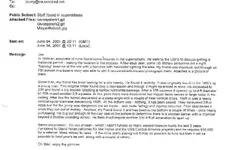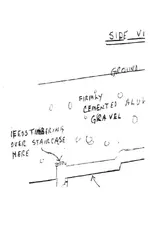Thanks for the kind words.It is always nice when one's efforts are appreciated,even when disagreement occurs.
As someone with a lifelong interest in history,geology and archaeology etc.,I have read probably hundreds of reports and articles published by noted and not-so-noted authors of these subjects.Many reports since the early seventies,I have noted,seem to go to unusual lengths to reinforce the lack of any significant finds of precious metals or gemstones.Nowhere,does this denial of even the possibility of Spanish,or earlier mining,or even the likelihood of storage/cache sites more frequently occur than in the southwestern archeological literature.
I have little doubt that politics play no small part in what discoveries are revealed.Government policies and law makes all finds of value effectively the property of the state and subject to state control.ie:storage,study,and disbursement.Maverick researchers who disagree with existing theory and unaccredited hobbyists usually suffer from both a lack of funds and laws designed to prevent even ethical research or fieldwork (even if you own the land).If you should be so lucky as to discover a site (especially a "lost" gold or silver mine) and it becomes public,chances are that it will be the last time that you will ever be allowed to set foot there.Any digging or removal of artifacts could earn you a nightmare vacation in one of Sheriff Joe's holiday resorts.Even though these regulations are necessary to prevent looting and destruction by pothunters,for example,they also discourage other unofficial explorers from reporting any finds.
Political desire to maintain the status quo plays no small part in both the direction of research effort and the publication or non-publication of findings.Imagine the modern day gold rush frenzy that would occur if historians were to proclaim a discovery of pre-columbian or pre-Hildago gold mining in the Superstitions.I,for one do not wish to see a return to the earliest days of the LDM search.The whizz of passing small arms fire makes me nervous and I'd rather return to my hotel with my head attached to my body.The ongoing and very politicized controversy regarding native land claims as well as the minefield associated with the "AZTLAN" claim has the potential to bring southwestern archaeology to a grinding halt.I personally believe censorship and removal of many past publications from public access has been encouraged for some time already,due to these considerations.
There are,of course,many other factors which may influence the reporting of controversial artifacts.Many brand name scientists have based their entire careers on the quest to prove a pet theory,or to confirm an admired colleague's theory.Having written many past papers and having given many lectures supporting these same beliefs,how eager would YOU be,to admit that everything that you presented in the past was wrong?There have been many past legal proceedings against men of science,who strayed and falsified findings in order to achieve acclaim and funding,or who were caught in the blatant act of selling artifacts.In most cases we will now never know where the objects were originally discovered.Could some of these artifacts have been found in places where they didn't belong,according to accepted scientific beliefs?
Sorry all,but I'm on a bit of a writing binge here

-- so bear with me

Gold in the Superstitions?
Politics,Power,Greed,Scientific Pride,Environmental Protectionism are big words that tell us why there is No Gold in the Superstitions.
*** Reason is the one word that says that there Is ***
---Forget for a moment that you have ever heard of the Perralta's or the massacre.You have never heard of Doc Thorne or anything about the two soldiers.Forget about Jakob Waltz and his Lost Dutchman Mine and all those who followed his trail or that of the stones.
---Done?---Good--let us begin
Reason 1
The GOLD mines of Goldfield.Located near the rim of cauldera #1,the original town in the 1890's had a population of from three to five thousand miners,merchants and whores who supplied about 50 mines with labour,goods and entertainment, and there are four more caulderas across the Superstitions.
Reason 2
The geological history of the Superstitions.
Gold is found everywhere on the face of the earth,but the greatest concentrations are found or have been sourced in areas of long-term volcanic activity.The list of minerals associated with gold is long and they all can be found here.From about 470 million years ago until about 340 million years ago the area was either under or above water.
"
http://jan.ucc.nau.edu/~rcb7/paleogeogwus.html"
Base rock is composed of sedimentary,igneous and metamorphic types.All types,according to my research,associated with volcanic activity and more importantly,gold,are present.Both mesothermic and hydrothermic quartzes are present in differing colours,clarities and densities.ie:jasper,amethyst,rose and snow.
Prior to and concurrent with the eruptions of the volcanic caulderas these mountains were formed and eroded and blown to pieces and covered with volcanic debris time and time again.Each apocaliptic
event presented a new opportunity for gold formation.All that was needed was heat,pressure and water to complete the recipe.
End of part 1---it's getting late,so I'll finish it tomorrow
Gnite--SH.










